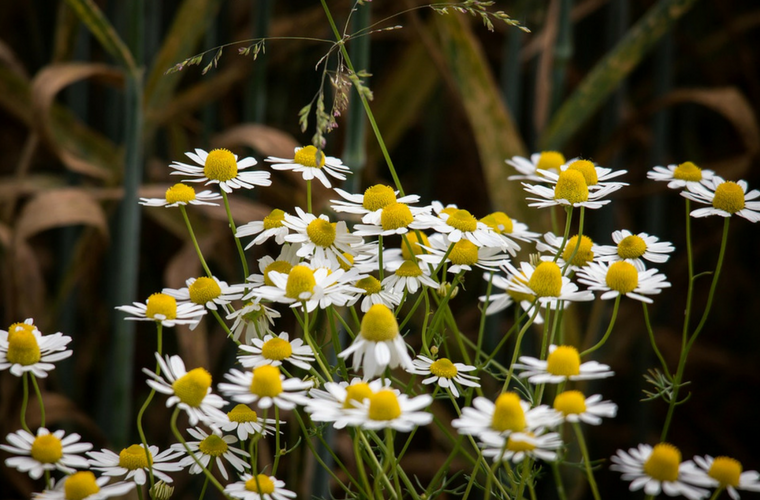Image courtesy of Pixabay/Didgeman
Do you have a couple of favorite herbs you go to most of the times?
Over time I’ve learned it’s better to know one herb with 10 healing or cooking uses than 10 herbs with 1 effect. I bet that your favorites fit this description nicely.
Early fall is a great time to incorporate new teas in your daily routine. Many things are changing – weather, schedules, foods we eat/gravitate towards. It feels good to start taking extra care of yourself.
The plant we’ll look at today will help you to do just that. This one is a queen of herbs in my mind.
I am talking about Chamomile (or Matricaria recutita).
This plant is so incredibly gentle that it’s often recommended for use in babies.
You’ve probably heard about Peter Rabbit, the character from Beatrix Potter children’s story. You might even remember he was bullied on the playground, and Peter’s mom gave him some chamomile tea to soothe his nerves and belly.
This story always reminds me of two amazing healing qualities that chamomile offers us – anxiety and digestive relief. It is especially powerful when there is a connection between those two concerns.
Today, I want to share with you 3 of my favorite uses for Chamomile.
1. Nervine
Chamomile is a nervine herb, which means it has calming and relaxing effects on the body. It is often used for irritability, anxiety and insomnia. You need to use smaller doses for irritability and anxiety and larger doses for sleep inducing effects.
2. Digestive help
There are few herbs that are as gentle and powerful in their anti-inflammatory and spasm-reducing effects on the gut as chamomile. Chamomile is relaxing to your nerves and to your gut.
3. Wound healer
This plant is successfully used to bring down the inflammation and soothe cuts and burns. I love using chamomile lotion for anything from bug bites to inflamed scratches. Chamomile is an amazing tool for your inflamed skin.
In case you are thinking that these are the only uses for Chamomile, check out the research on topical applications for carpal tunnel syndrome, osteoarthritis of the knee, and eczema.
These studies look at the Chamomile’s oral use for blood sugar and lipid control in patients with diabetes, premenstrual symptoms, ulcerative colitis, anxiety, and more.
Are you wondering where to start?
Preparing chamomile tea is very simple. Place about 1 spoon of chamomile flowers in a cup, and add some boiling hot water. Cover the cup and let it steep or infuse for 10 minutes for calming and relaxing tea. If you steep it for a long time, bitter principles (that are fabulous for your digestion) begin to come out.
Aviva Romm, MD is one of the herbalists I follow and I learning from. Aviva teaches parents to use chamomile to reduce consumption for their kids. To do this chamomile tea can be mixed with apple juice in equal proportions. Slowly over time you can reduce the juice and ultimately switch to chamomile tea entirely.
Another herbalist, Katja Swift, recommends patients prone to anxiety a chamomile-infused white wine.
One of my favorite digestive tea has chamomile flowers, fennel seeds and catnip leaves. You can add other ingredients to it, but even this simple trio works well to heal the gut.
If you have a ragweed allergy, please start with chamomile slowly – some people cross-react to it.
Questions: Would you consider giving chamomile tea a try? Do you know where to find good quality chamomile?


